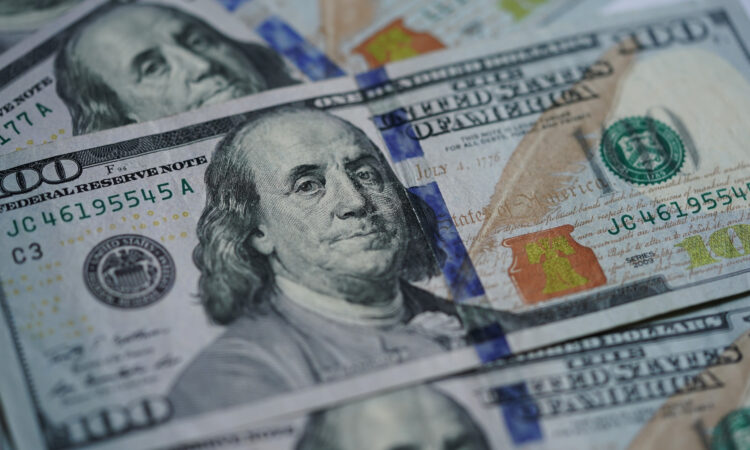
The dollar caught its breath in Asia on Thursday, steadying as U.S. yields went up while investors waited on European inflation data, after nasty surprises in Germany, France and Spain have given a boost to the euro this week.
The dollar lost 0.9% on the euro on Wednesday, its sharpest drop in a month. It was about 0.2% firmer on the euro on Thursday, with the common currency at $1.0649 in Asia trade ahead of inflation data due at 1000 GMT.
With hotter-than-expected German inflation in February adding to pressure on the European Central Bank to raise rates after unexpectedly strong readings in France and Spain, markets are bracing for another uncomfortably high reading.
“Expectation is for a slower rise … down from last print of 8.6%, but this is in contrary to France and Spain CPIs which have recently re-accelerated,” said OCBC Bank strategist Christopher Wong in Singapore. “An upside surprise could lend some strength to the euro.”
The U.S. dollar index rose 0.2% to 104.58, helped as U.S. Treasury yields hit fresh high during Asia trade and as Federal Reserve official Neel Kashkari left the door open to a 50 basis point rate hike at the Fed’s next meeting in March.
Elsewhere the yen was fairly steady at 136.40 to the dollar, while the Australian and New Zealand dollars and the Chinese yuan wavered slightly after strong Wednesday gains supported by roaring Chinese manufacturing data.
The Aussie dollar needs to clear its 200-day moving average at $0.6794 to keep its recovery going. It was last 0.2% softer on Thursday at $0.6746. The New Zealand dollar which rose 1.2% on Wednesday, fell 0.4% on Thursday to $0.6230.
China’s yuan settled back to 6.8928 to the dollar after logging its biggest jump of 2023 on Wednesday.
Investors are looking ahead to the China’s National People’s Congress meeting, which begins on Sunday, with an eye to guidance on policy support for the post-Covid recovery.
“Yesterday’s positive surprise in the PMIs for China in February are a positive for mining commodity prices and the currencies of countries that export them,” said Commonwealth Bank of Australia’s head of international economics, Joe Capurso.
“We consider the Australian dollar can increase materially in the weeks after China’s Two Sessions meetings,” he said.
“The yuan and commodity currencies such as the Australian and New Zealand dollars can rise materially if the meeting sends a pro‑growth signal, as we expect.”
Elsewhere sterling was held back by remarks from Bank of England Governor Andrew Bailey, who said “nothing is decided” on future rate increases which had traders trimming back bets on higher rates. Sterling was down 0.2% to $1.2005.
Bitcoin has made little headway despite the dollar’s dip and was last at $23,493. Trouble at crypto bank Silvergate has weighed on the mood and the bank’s stock dropped 28% on Wednesday after it warned it was delaying its annual report and evaluating its ability to operate.
Besides European inflation, euro zone employment and central bank minutes are due later in the day, as is U.S. jobless claims data.





